
Cattle and Land Use: The Differences between Arable Land and Marginal Land and How Cattle Use Each
Cattle and Land Use: More Than Meats the Eye
Simply put, land use refers to how we use the land. It represents the economic and cultural activities such as agricultural, residential, industrial, mining and recreational use with respect to human activity and is an important consideration when discussing the sustainability of the foods we eat.
Land occupies just 29% of the Earth's surface, making it a finite resource. As such, it is important to consider the land required to produce our foods. Beef cattle production often gets characterized as having a large land use footprint compared to other foods. While cattle do indeed utilize a large amount of land, the discussion around the type of land used for cattle production is largely glossed over. Globally, the agricultural industry occupies roughly 123.6 million acres, which is about 38% of all available land. Agricultural land is divided into two main categories: arable land – which is where we grow plants for food – and marginal land, which is land that is not suitable for growing crops for one reason or another. Arable land takes up one third of agricultural land, and is dedicated for crop production. The remaining two-thirds, marginal land, is either untouched or is home to grazing livestock, which by and large is cattle.
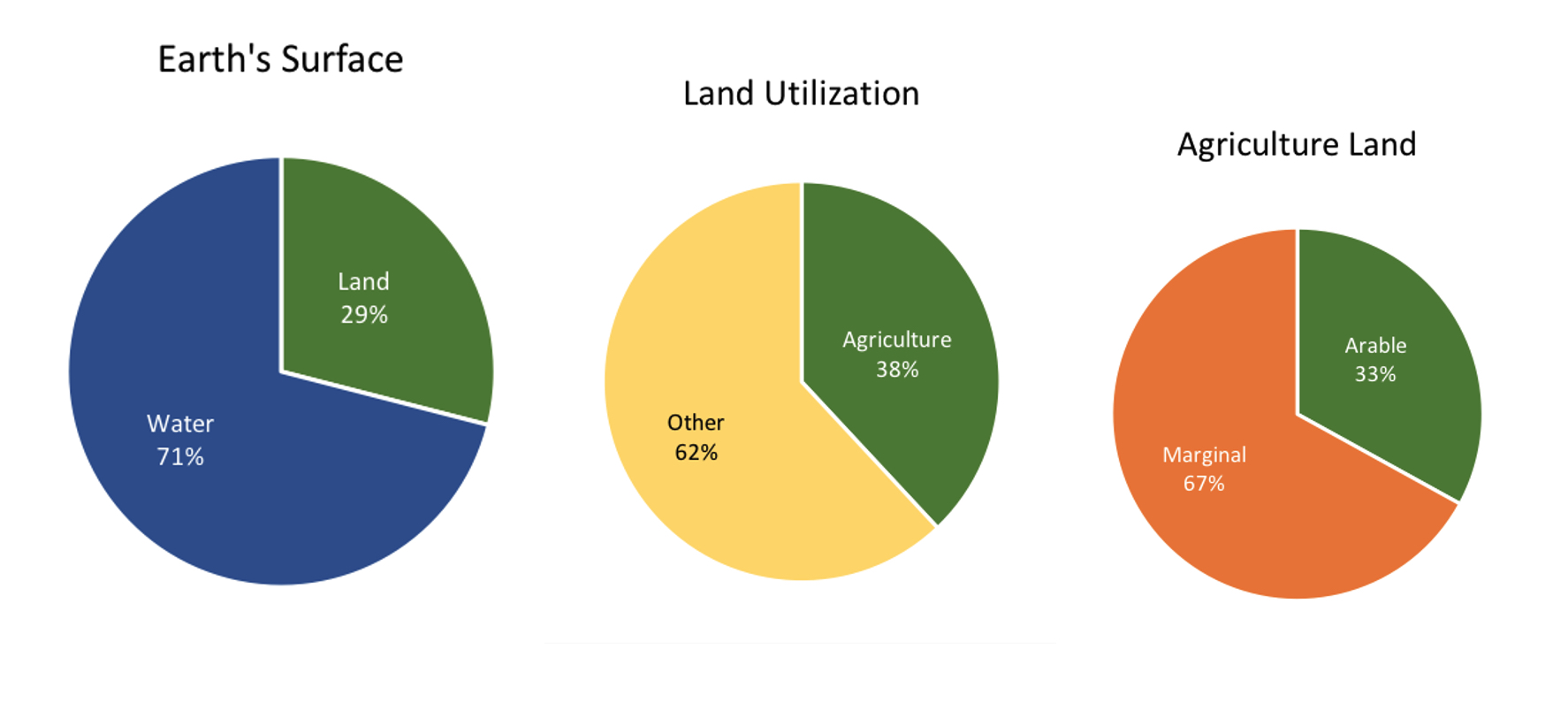
Arable Land: Do cattle consume human edible food?
Arable, by definition, is the ability to be plowed. As such, arable land is rich in nutrient-dense soils, sunlight, and predictable temperatures, which is why it is used for crop production. Arable land can sometimes be cultivated from non-arable land by treating pastures to restore soil quality, or through the removal of forests. However, land such as mountains, deserts, and tundras are permanently deemed “non-arable” and cannot be used for crop production.
Arable land produces two crop types: annual and permanent. Annual crops like rice, corn, and tomatoes have only one life cycle, producing just one crop during a growing season. In contrast, permanent crops have multiple life cycles yielding food each year. Permanent plants come in many different shapes: from tall trees, to long vines, and short shrubs, they produce an array of foods like nuts, grapes, and berries.
We use arable land to grow crops for people to eat, but we also use some arable land to raise livestock. At a global level, livestock production takes advantage of crops grown on about 40% of arable land, however, this does not mean that they eat 40% of food that people could eat. Rather, they are only consuming 14% of human edible foods that are used in formulating a total mixed ration (TMR), or “My Plate”, but for livestock. The remaining 86% is a mixture of forages and byproducts such as almond hulls, distiller grains, and soybean meal that humans cannot consume.
Cattle production on arable land is accomplished either by raising cattle directly on it, or indirectly by growing food that is later mixed into a TMR that we carefully formulate to meet their dietary needs. For the purpose of producing beef, the beef cattle industry has 3 major production stages: cow-calf, stocker/backgrounder, and feedlot.
The duration at which cattle spend in each of these stages is dependent on factors such as breed and growth performance, feed availability and ingredients used in ration formulation, and varying production system timelines. During the cow-calf stage and stocker/backgrounder stages, cattle spend up to 16 months of age consuming grasses and forages on rangelands, primarily taking place on marginal lands that are not crop friendly. After the cow-calf and stocker/backgrounder stage, cattle can either finish -the final stage of beef production- on rangelands as grass-fed beef or be relocated to a feedlot. On rangeland, grass-fed cattle finish on forages and are sent to harvest as late as 26 months of age. In the feedlot, cattle are conventionally finished consuming those formulated rations until harvest at 14-22 months of age.
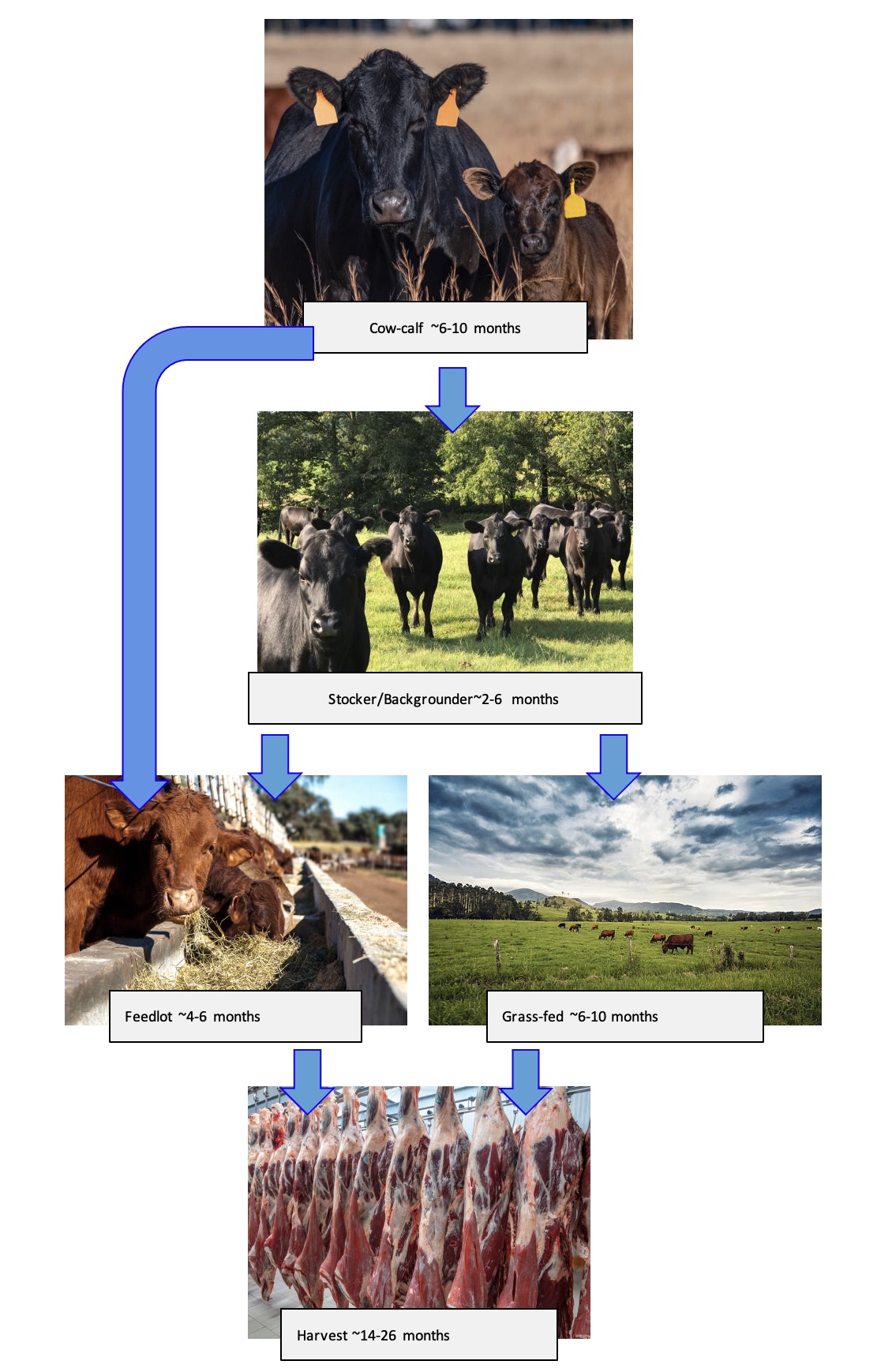
With respect to beef cattle raised in the United States, 93% of the diet during these 3 stages of beef production consists of food inedible for humans. The other 7% is sourced primarily from corn, which is fed in the TMR during the conventional finishing phase.
Overall, when discussing the topic of beef production, cattle spend the majority, if not all, of their life consuming and converting human, inedible forages and byproducts to meat that we can eat.

Why Can Cattle Utilize Marginal Land?
Marginal land, also known as pasture land and grassland, is an area that receives little to no water, has low quality soils, high mountains and steep slopes, and is barren and/or rocky. In some cases, marginal land is created from degrading arable lands while growing crops. For one reason or another, marginal lands aren’t able to grow food for people to consume. Instead, these lands naturally produce grasses and roughage that cattle graze upon.
Cattle Have a Unique Digestive Tract
Marginal land primarily yields low-quality grasses that are made of the world’s leading biomass: cellulose and hemicellulose – forms of carbohydrates that humans and other non-ruminants cannot digest. Cattle are ruminants – ruminants are unique in that they have a four-chambered stomach and within the first chamber, the rumen, are millions of microbes that allow cattle to digest these otherwise indigestible grasses. They do this by breaking the carbohydrates, such as cellulose, down to accessible sources of energy and protein to cattle.
The outcome of a ruminant’s unique digestive tract is the upcycling of otherwise-wasted agricultural land and human food waste such as imperfect bread, vegetables and candy to high-quality food we can eat – meat. Meat produced by cattle offers 20-24g protein/100g beef, provides all the essential amino acids, fatty acids, and macro- and micronutrients. In addition to meat production, cattle also provide us with products such as leather, medicines, fertilizer, and more.
Cattle Can Adapt to the Extremes of Marginal Lands
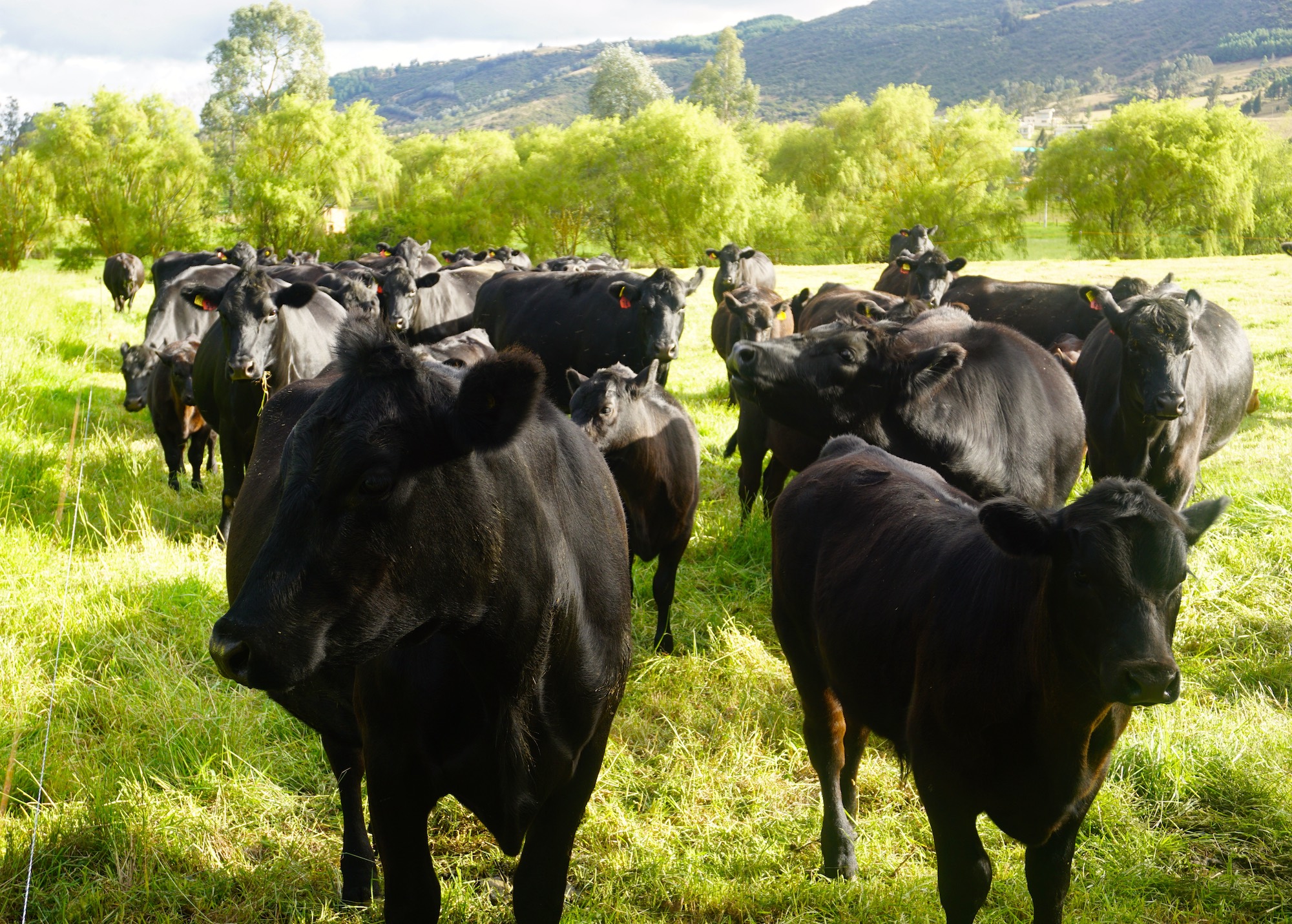
While marginal land is not suitable for crop production, cattle can adapt to these conditions. Cattle can learn how to navigate the rough, depleted terrains of marginal land to find feed and water, and are often bred for specific regions and climate. For example, colder regions are largely grazed by Bos taurus breeds such as Angus and Hereford because they grow heavy winter coats and can easily endure temperatures as low as 20°F. In contrast, cattle that are crossed with Bos indicus breeds are capable of adapting to drier, hotter climates because they have short hair, dark skin, and a steady metabolism in response to heat stress.
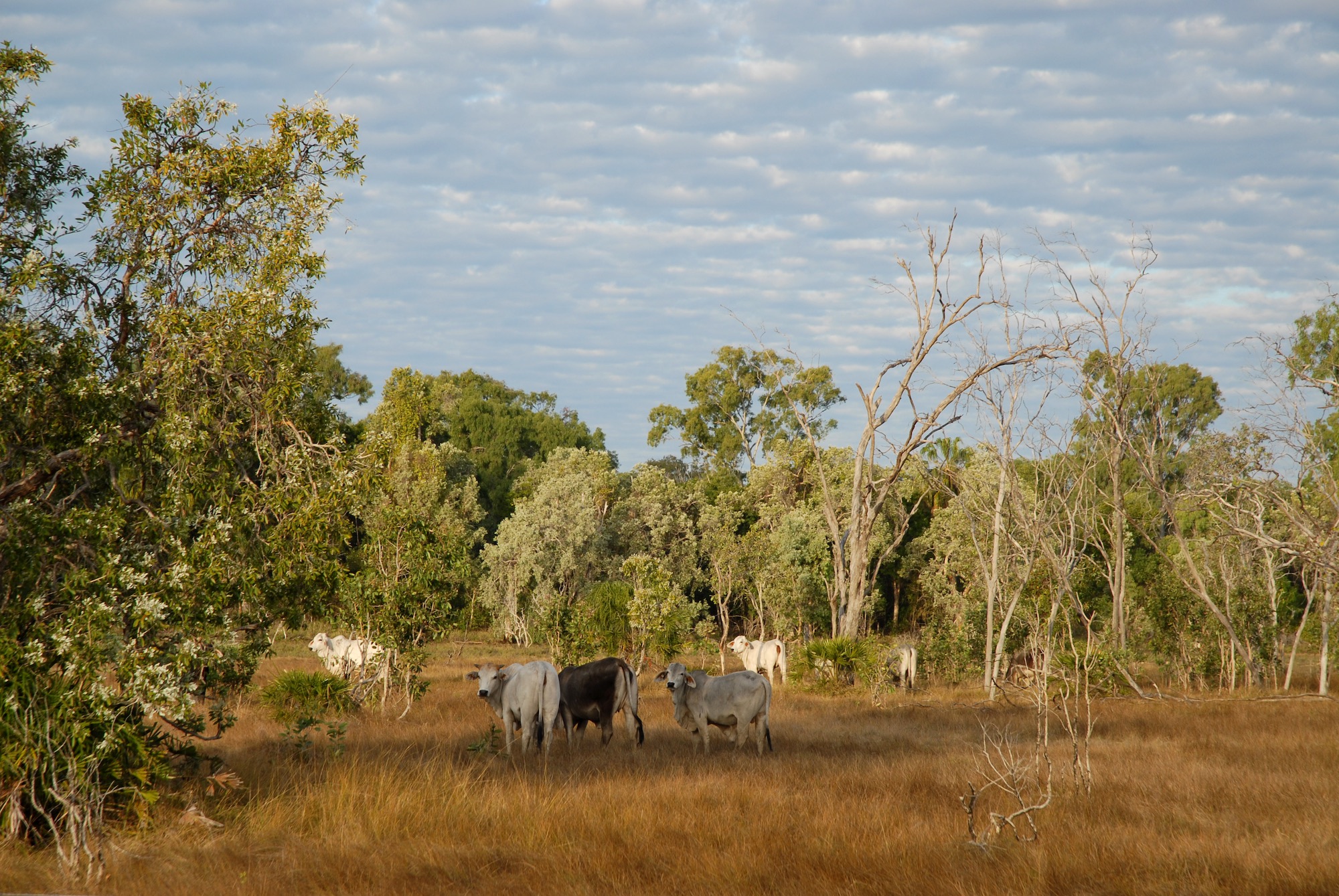
How do Cattle Benefit Agricultural Land?
Restoring Land Health
Not only do cattle keep marginal lands thriving, they can help restore “spent lands.” Spent land is land that cannot be used for food production because its soil has been depleted of essential nutrients. However, through healthy grazing management, cattle can be a solution to resorting spent land.
Rotational grazing
A developed form of grazing management is rotational grazing, allowing cattle to graze upon one section of a pasture at a time. This is accomplished when a larger pasture is divided into smaller sections called paddocks. Cattle are rotated throughout these paddocks, which restricts their activity to one area of the pasture at a given time. This prevents cattle from overgrazing the land and allows the remainder of the pasture to “rest” before being grazed upon again. When done correctly, cattle leave behind a healthier ecosystem!
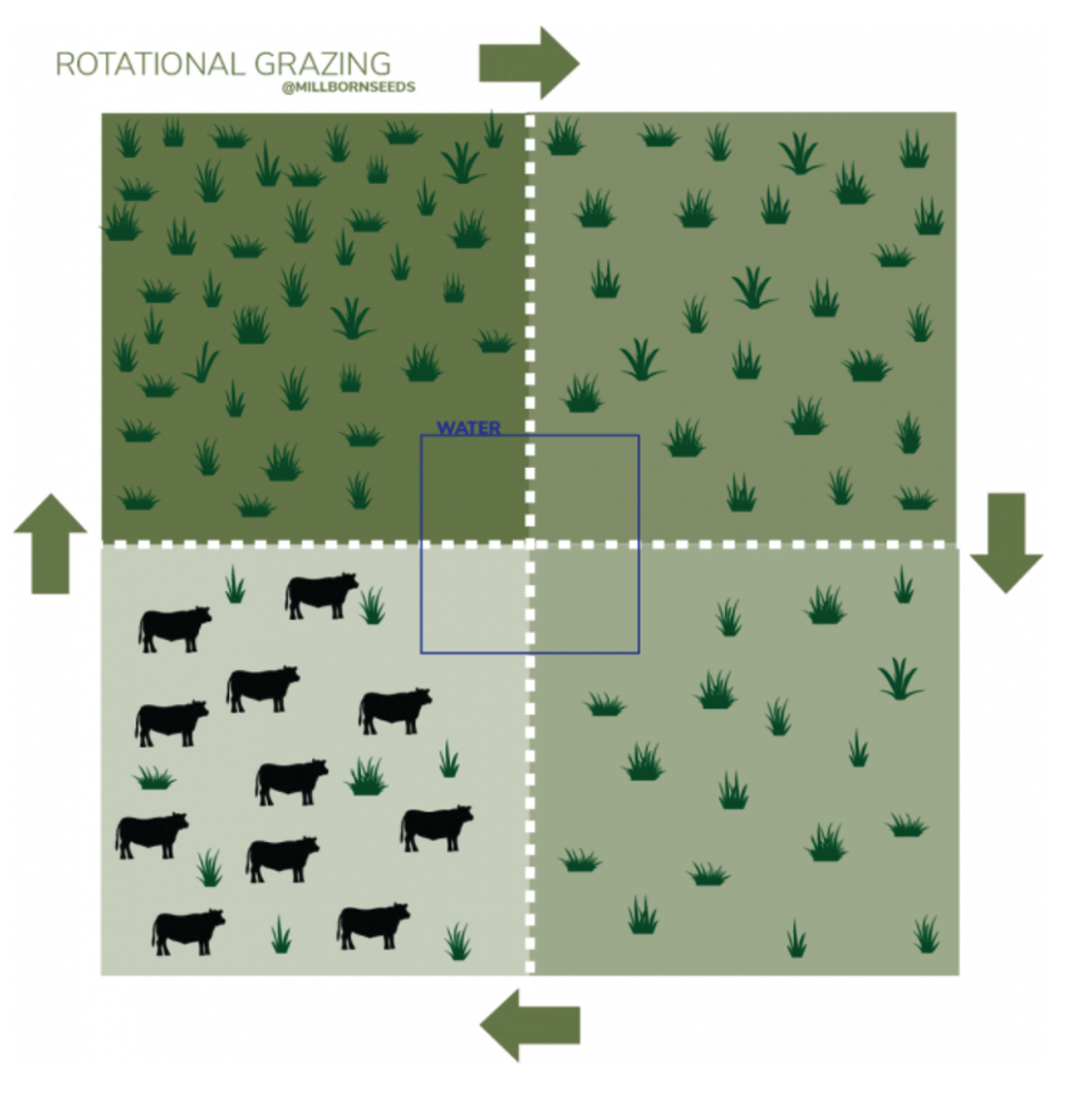
Rotational grazing decreases the potential of soil erosion, the need to apply pesticides and fertilizers, and regulates the return of nutrients to the soil. Soil erosion is the deterioration of soil, which is often a consequence of rainfall or wind carrying away nutrient-rich topsoil. Land that is tilled often or excessively trampled on during overgrazing is especially susceptible to soil erosion. Through rotational grazing, however, land is not overused. This preserves soil quality and improves water holding capacity, leading to healthy pastures and supporting beef production for us to eat.
Cattle play an important role in promoting plant diversity and abundance. Plants, like many organisms, compete for land, food and water. Desirable plant species can easily become overrun by weeds, but under rotational grazing, cattle regulate weed growth, which lets other species access these essential resources. Rotational grazing also prevents cattle from overgrazing, reducing the need for plants to start from seedlings, increasing forage availability, and improving soil carbon sequestering.
Carbon Sequestration
Carbon is one of the most abundant elements found on Earth and is a major contributor with respect to climate change. Many of the processes involved in planting crops, including the burning of fossil fuels, lead to the release of carbon dioxide (CO2) from agricultural land. This occurs when soils are turned to recycle residual crops, remove weeds, and expose nutrients for incoming crops. This process results in carbon being released into the atmosphere, which contributes to the accumulation of greenhouse gasses, thus intensifying climate change.
However, cattle play an important role in carbon sequestration – the process of capturing and storing atmospheric carbon – through the biogenic carbon cycle. In the biogenic cycle, plants pull CO2 from the atmosphere during photosynthesis and store it as carbohydrates in their roots, stems, and leaves or return carbon to the soil. Grazing cattle consume these plants, and the carbon that is not utilized by the animal is released in the form of methane (CH4) through belching and manure. This released CH4 then remains in the atmosphere for approximately 10 years before being converted to CO2. Plants can then recapture this carbon to begin the biogenic cycle again.
 Manure carbon that is not released in the form of CH4, is an energy source used by soil microbes. Soil microbes are responsible for recycling organic matter into fundamental nutrients for plant growth and either converting carbon into dissolved organic carbon for long-term storage or releasing carbon as CO2 for plants to use in photosynthesis – ultimately, more soil carbon sequestering! Manure not only supplies energy to microbes, but it also returns nutrients back to the soil that were not used by the cow. Like carbon in the biogenic carbon cycle, nutrients in the soil undergo a similar cyclic transaction when consumed by cattle. Nutrients in the soil are extracted by plants during growth, are then consumed by cattle, and are deposited back into the soil through cattle manure.
Manure carbon that is not released in the form of CH4, is an energy source used by soil microbes. Soil microbes are responsible for recycling organic matter into fundamental nutrients for plant growth and either converting carbon into dissolved organic carbon for long-term storage or releasing carbon as CO2 for plants to use in photosynthesis – ultimately, more soil carbon sequestering! Manure not only supplies energy to microbes, but it also returns nutrients back to the soil that were not used by the cow. Like carbon in the biogenic carbon cycle, nutrients in the soil undergo a similar cyclic transaction when consumed by cattle. Nutrients in the soil are extracted by plants during growth, are then consumed by cattle, and are deposited back into the soil through cattle manure.
Therefore, cattle do not emit new carbon into the atmosphere — instead, they are part of a natural cycle of carbon recycling!
Land is a finite source and careful consideration of its use with respect to human activity and the production of food is extremely important. While it may seem that cattle do require a large amount of land to produce human consumable food, it is important to remember that the majority of that land and those resources cannot be directly used by us. In addition to the upcycling of resources that would otherwise go to waste, cattle play an important role in the ecosystem and the management of climate change.
